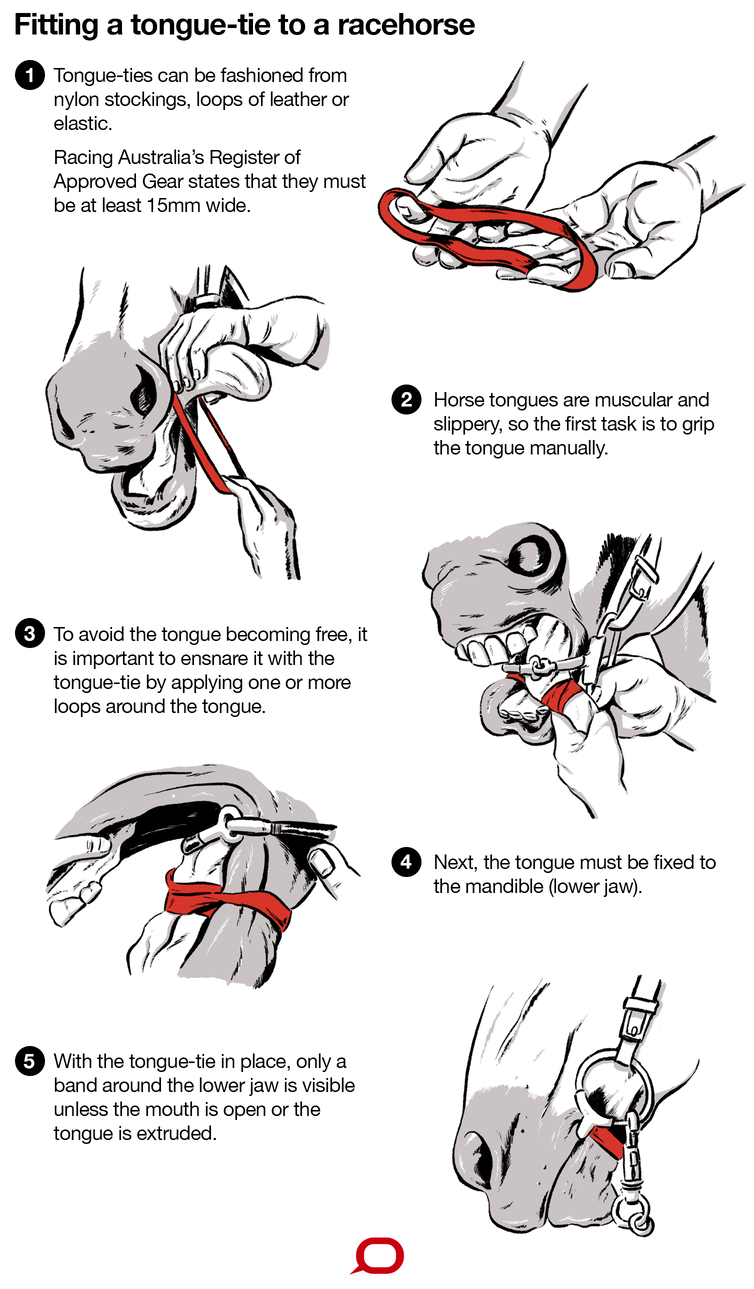Industry tongue-tied over ethical horse treatment

Equine experts have called for further investigation into tongue-ties and whether they help or harm racing horses.
“The widespread use of tongue-ties in Australian horse racing has recently come under fire,” says Associate Professor Samantha Franklin, from the School of Animal and Veterinary Sciences.
“Given that other equestrian sports are conducted without tongue-ties, many would argue that racing should be as well.”

A tongue-tie is a strap that immobilises a horse’s tongue. Supporters of this practice say that it prevents breathing issues during races which increases performance and improves the rider’s control of the horse. Tongue-ties are banned in most non-racing equestrian sports in Australia.
A/Prof Franklin said there is limited data to show that tongue-ties actually improve breathing or racing performance. There’s also mounting evidence that they can cause stress and injury.
“Some horses subject to tongue-ties incur injuries such as lacerations, bruising and swelling of the tongue, difficulty swallowing, as well as behavioural signs of anxiety” she said.
“Furthermore, a recent study performed by our group also revealed that application of a tongue-tie for 20 minutes resulted in behaviours indicative of stress and an increase in salivary cortisol levels.”
A/Prof Franklin said that the industry needed to address two separate issues.
“Firstly, if tongue-ties are being used to address upper airway obstruction then a veterinary diagnosis should be required. There are many causes of abnormal breathing noise that would not be helped by a tongue-tie.”
“Secondly, there is the issue of control. If one argues that tongue-ties are needed for safety because they stop the tongue travelling over the bit, then theoretically one is obliged to use them for all horses – since all horses have the capacity to adopt this evasion.”
A/Prof Franklin, an equine veterinarian, is renowned internationally for her research into equine dynamic upper airway obstructions.
